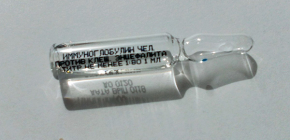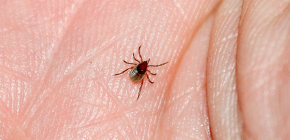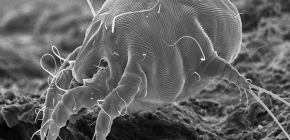Ticks

There is an opinion that the sucked tick must be unscrewed by all means clockwise, otherwise the head will come off and it will remain in the skin. Meanwhile, the structure of the proboscis of the parasite is symmetrical; there is no “thread” on it, which would necessitate rotation strictly in one direction or another. So what is the truth - how do you need to properly unscrew the parasite, what tools allow you to do it as safely as possible and what nuances need to be taken into account in order to reduce the risk of severe consequences of developing tick-borne encephalitis and Lyme borreliosis? Let's figure it out...

The timely introduction of human immunoglobulin against tick-borne encephalitis in many cases really makes it possible to avoid the development of a dangerous disease, even with the simultaneous suction of several infected ticks at once. So it is possible with a high probability to avoid the severe consequences of tick-borne encephalitis in those people who have not been vaccinated against it. About whether anti-encephalitis immunoglobulin always works and in what cases its injections are practically useless, we will discuss in more detail later ...

The most reliable protection against tick-borne encephalitis is provided by vaccination, or rather, a vaccination course that has been timely completed according to a certain scheme.Even if a vaccinated person is bitten by several infected ticks at once, the immune system will reliably suppress the activity of the TBE virus, and the infection will not develop further. Let's see what tick-borne encephalitis vaccines are on the market today, how they work, how to properly prepare for vaccination and what possible side effects you should be aware of in advance ...

The ear mite is a dangerous parasite that often infects dogs, cats, rabbits and other pets and causes them a disease called otodectosis (in other words, ear scabies). A dog can pick up otodect ticks anywhere: walking in the park, square, in the courtyard of the house. The disease develops rapidly and is characterized by pain and severe itching in the ears, which are accompanied by abundant discharge from the ear canals of a viscous brown mass, literally teeming with parasites and their eggs and capable of infecting other pets. If timely treatment is not started, then the disease can lead to complete deafness and even death of the animal ...

There are a large number of devices that facilitate the process of removing stuck mites from the skin. All such devices have a similar principle of operation, but not all of them are equally convenient to use, and for some of them the design can hardly be called effective at all. Next, we will talk about how to choose the most convenient and practical tick remover - let's see what they are, in general, and how to use them correctly in order to remove the stuck parasite from the skin without risk to health ...

Ticks, sometimes settling in pillows, can be called one of the most dangerous synanthropic arthropods for humans. It is their fault that the greatest number of allergic rhinitis, cases of bronchial asthma and atopic dermatitis develop. At the same time, protecting and getting rid of such ticks is not such a difficult task. The main thing is to identify the problem in time and competently approach its solution ...

Dust mites do not bite a person, do not suck his blood and do not infect with infections, however, despite this, they pose a serious danger to people. The fact is that dermatophagous mites provoke the development of severe allergies that are difficult to treat and seriously reduce the quality of life (up to asthma). At the same time, it is easier and safer to prevent such an allergy than to fight it for a long time. Let's see what tick-borne sensitization is fraught with, how it is treated today and what can be done so as not to get to know her personally ...

Ear mites are widespread parasites of domestic and wild animals. For humans, in general, they are not very dangerous, although cases of parasitism of the mite Otodectes cynotis have been recorded in humans. If the disease is started, then purulent otitis develops - suppuration is observed in the inner ear, which often leads to the spread of inflammation and its transition to meningitis. Next, we will talk in more detail about the interesting features of the biology of ear mites and effective methods of dealing with these parasites ...

As a rule, when people talk about bed mites, they mean either bed bugs or dust mites. Bed bugs are typical parasites that feed on human blood and leave itchy bites on the body. But dust mites are not parasites and do not bite a person, however, when accumulated in pillows and mattresses, they can cause the so-called tick-borne sensitization, which often leads to excruciating asthma and chronic nasal congestion. We will continue to talk about situations in which bedbugs and dust mites are present in more detail ...

The most typical and widespread household mites are dust mites, which inhabit most apartments and houses to one degree or another. They do not bite people or pets, but nevertheless pose a serious threat to human health, as they can cause allergic sensitization, which often leads to chronic rhinitis and bronchial asthma. What are these human neighbors and how to deal with them correctly? Let's figure it out...
